
Freedman's Village developed on the grounds of Arlington Plantation in the 1860's
Source: Harper's Weekly (May 7, 1864)

Freedman's Village developed on the grounds of Arlington Plantation in the 1860's
Source: Harper's Weekly (May 7, 1864)
NOTE: Do not assume that the values of today have been accepted as the "normal" values in all societies in all times; "presentism" obscures the context of "facts." Do not assume that people in the past who did not behave according to modern values are automatically clueless/stupid/sinful in some way. Please make your judgments after considering the circumstances.
In future centuries, everyone may believe that burning petroleum as a fuel was a terrible waste of an extraordinarily-valuable chemical compound, and condemn those who used gasoline to drive to work. In future centuries, it may be perceived that the Earth's capacity for human population was only 4 billion people, and condemn those who had more than one child after 1975. But right now, most humans behave as if some use of gasoline for energy, and having children, are socially acceptable.
Filtering one's understanding of the past by the standards of today is known as "presentism." Before reading about slavery in Virginia, recognize that personal judgements today on the behavior of the past shape our understanding. Discussions in the 21st Century on slavery in the 19th Century can trigger emotional eruptions regarding the moral character of Southern slaveowners and Northern capitalists. If you do not examine unspoken assumptions that slavery is evil and everyone must have always known that emancipation was the only solution, then you may mis-understand how societies and places change over time.
The US Supreme Court has shifted its interpretation of the meaning of the statement in the Declaration of Independence that "all men are created equal." In 1857 in the Dred Scott vs. Sandford decision, a majority of justices on that court ruled that in regard to the aspirational words of Thomas Jefferson:1
Douglas Deal addressed the question of the good/moral slaveowner in a posting on the VA-HIST listserver in June, 2007:2
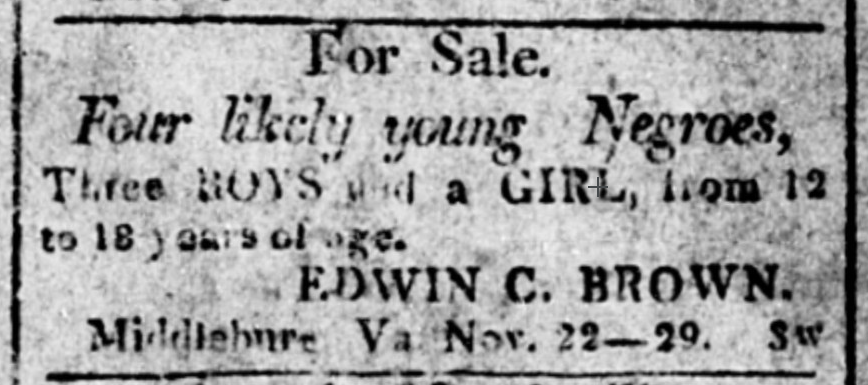
enslaved people were bought and sold as commodities, like firewood and bricks
Source: Virginia Chronicle Alexandria Gazette, Commercial and Political (December 15, 1814)
Slavery, as an institution, changed in Virginia between 1619 and the adoption of the 13th Amendment to the US Constitution after the Civil War. The "peculiar institution" evolved and metamorphosed under both internal and external pressures, economic and social.
Before the Civil War, Virginia had slaves for nearly 250 years. The 250th anniversary of the end of slavery in Virginia is still nearly a century away. Creating a culture of slavery took time, but by 1700 Virginia had established a clear distinction between white vs. black residents, how their labor would be valued, and how their lives would be controlled:3
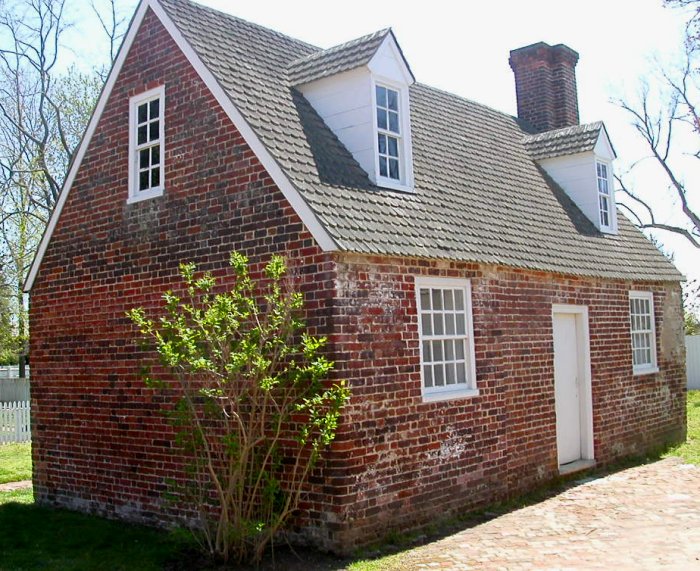
slave quarters in Williamsburg, near Governor's Palace
Before 1660, most slaves lived on plantations with 1-3 others, and most slaves were male. Interactions with whites were common and restrictions based exclusively on race were not rigid. By the 1680's, however, the status of "slave" was clearer and interactions with whites were restricted. By 1710 the average slaveholder owned 8 slaves, and there was a higher percentage of women in Virginia's slave population, so there was a greater possibility of some form of family life despite the greater restrictions.4
Source: Virginia Humanities, Mapping Virginia's Slave Dwellings: Preserving Black History with Street View
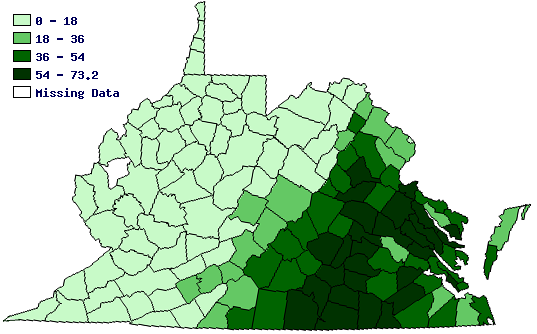
in 1860, the lowest percentage of Virginia's population held in slavery was west of the Blue Ridge
Source: University of Virginia, Historical Census Browser
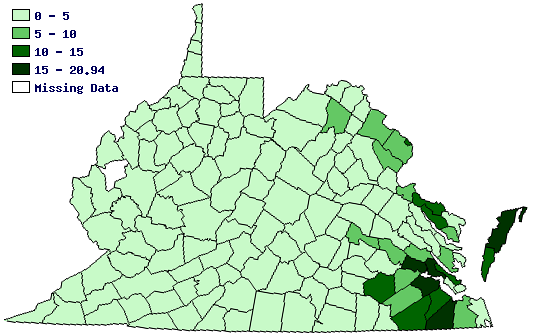
in 1860, the Eastern Shore and Tidewater Virginia had the highest ration of free blacks to the total population
Source: University of Virginia, Historical Census Browser
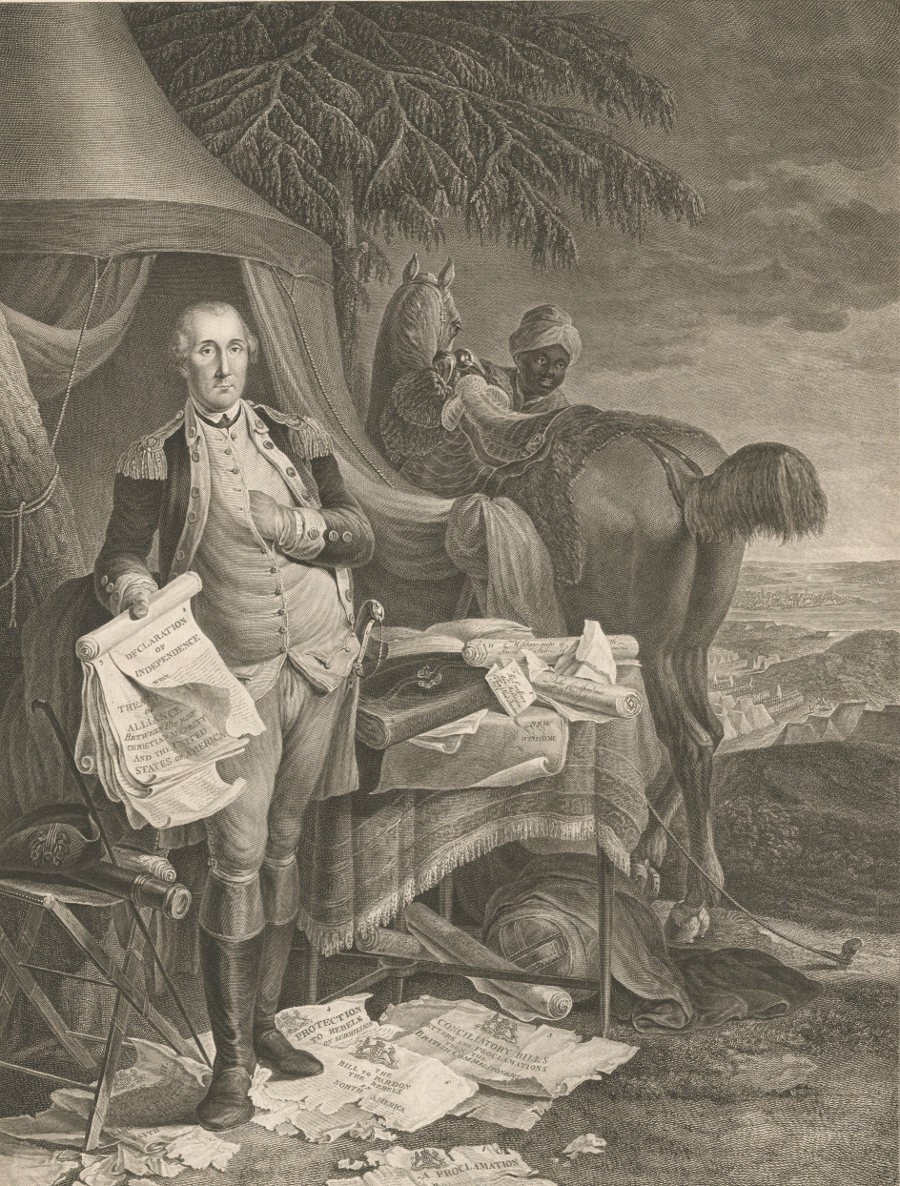
the Virginia gentry, including George Washington, relied upon slaves to do basic chores and free up the time for reading and political debate
Source: New York Public Library, Le general Washington (1778)
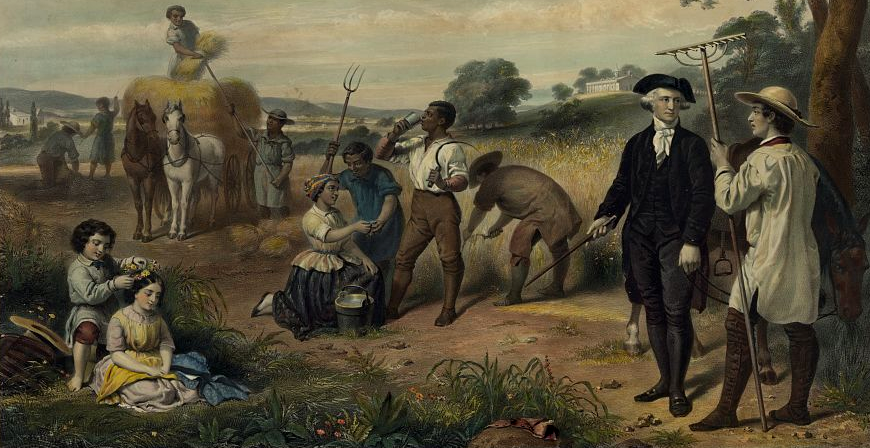
George Washington relied upon slaves to raise crops, catch fish, and maintain his personal wealth and lifestyle
Source: Library of Congress, Life of George Washington--The farmer (painted by Junius Brutus Stearns c.1853)

slaveowners hired out their "property," as well as required enslaved people to work directly for them
Source: Encyclopedia Virginia, Hiring Out of the Enslaved
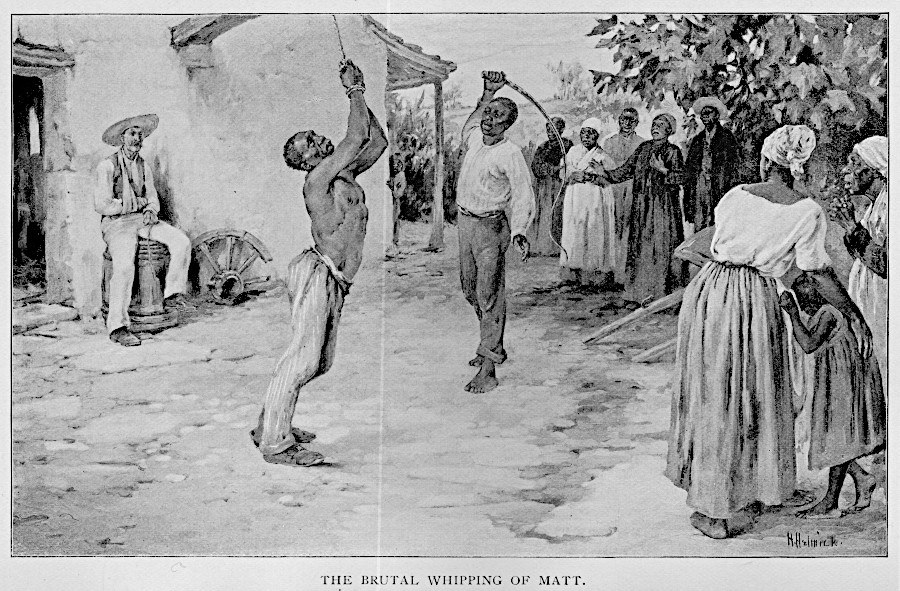
overseers were both black and white, and had the power to whip enslaved people brutally
Source: Slavery Images: A Visual Record of the African Slave Trade and Slave Life in the Early African Diaspora, Whipping a Slave, Virginia, 19th cent.
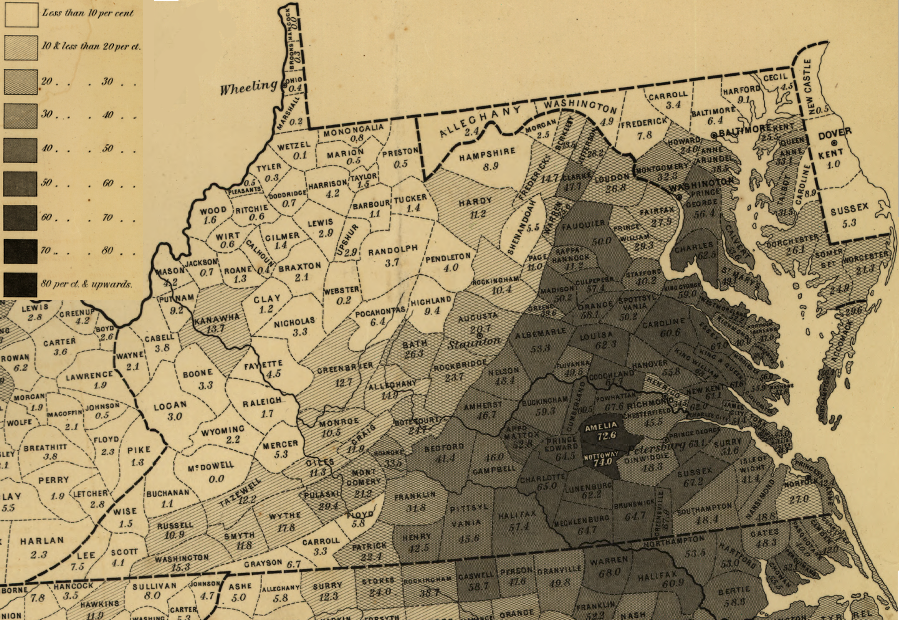
the percentage of slaves in the total population varied substantially among the different counties of Virginia in 1860, and west of the Allegheny Front slavery was most prevalent in Kanawha County due to the salt industry
Source: Library of Congress, Map showing the distribution of the slave population of the southern states of the United States. Compiled from the census of 1860
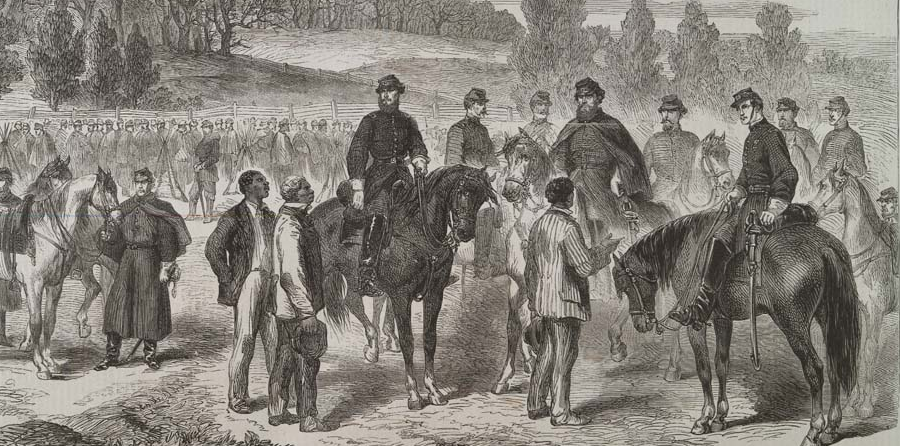
during the Civil War, slaves and free blacks were sources of behind-the-Confederate-lines intelligence for Union forces
Source: Illustrated London News, The Civil War in America: Reconnaissance Made by General Stoneman, Accompanied by the Comte de Paris and the Duc de Chartres, to Cedar Run (April 19, 1862)
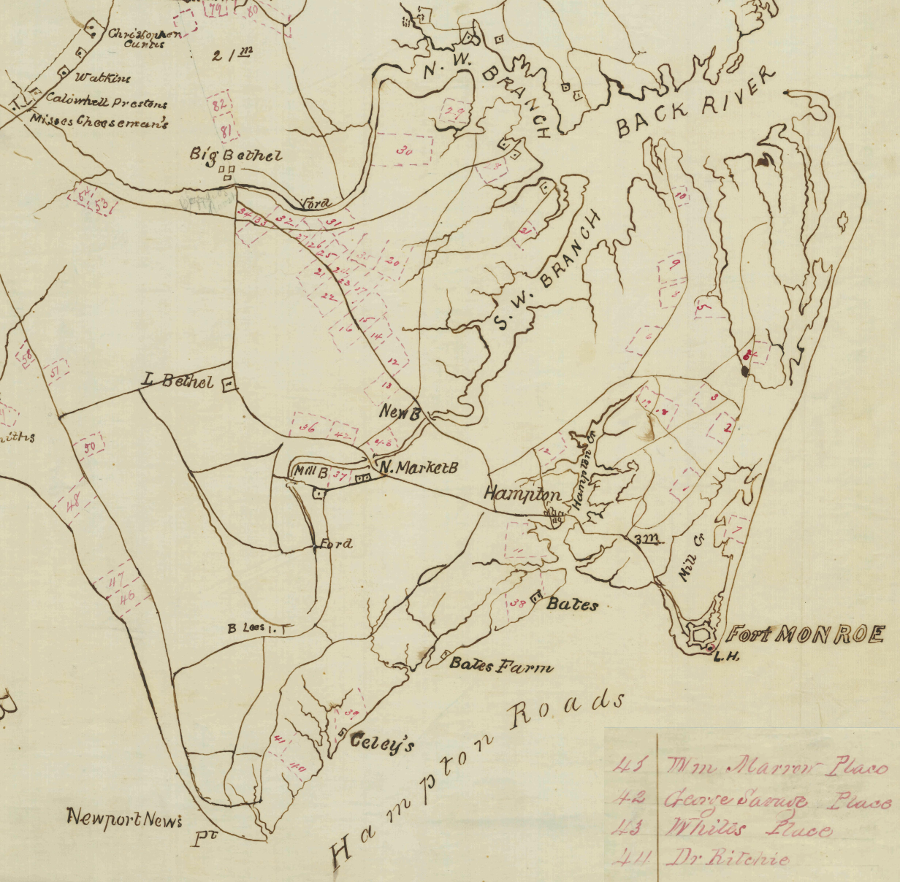
after the Union Army occupied the Peninsula, freed slaves were placed on farms
Source: National Archives, Manuscript Map Showing the Position of Government Farms, 1st District Negro Affairs, Department of Virginia and North Carolina
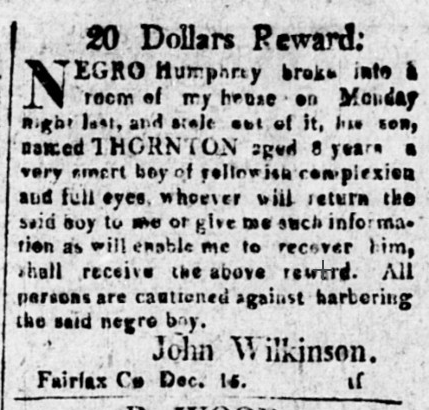
reuniting a family was defined as theft in 1814, when a child was defined as property
Source: Virginia Chronicle Alexandria Gazette, Commercial and Political (December 15, 1814)
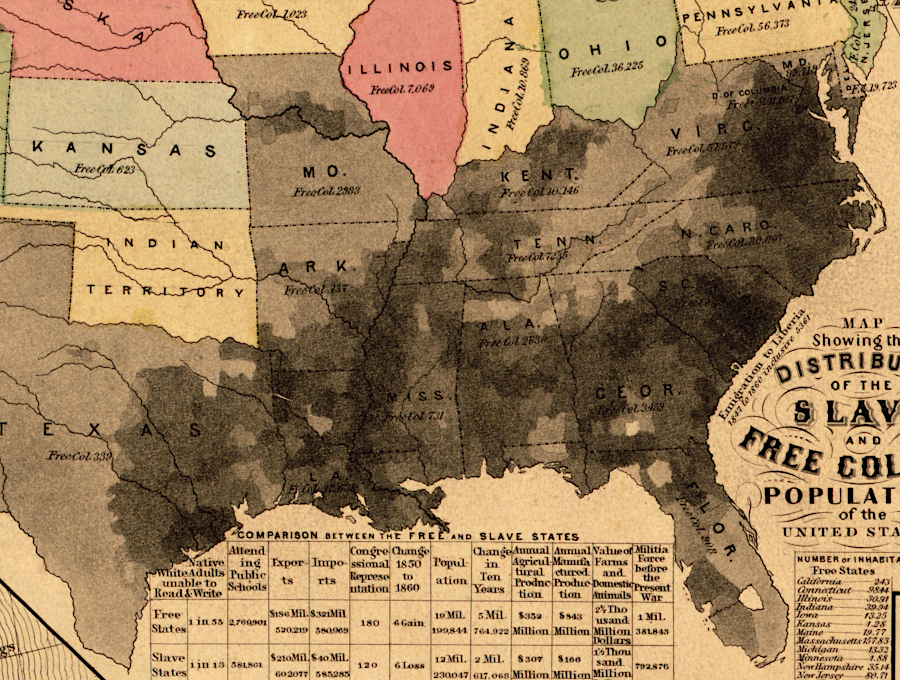
in 1860, there were fewer enslaved people in western Virginia, North Carolina, and Texas, and also in eastern Kentucky and Tennessee
Source: Library of Congress, The new naval and military map of the United States (by John Calvin Smith, 1862)
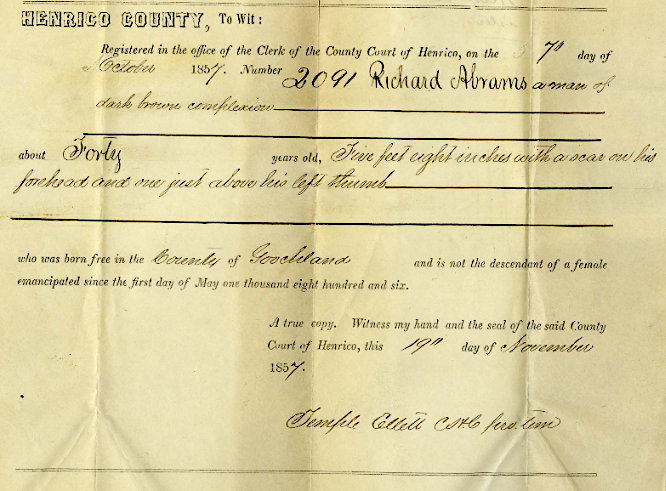
laws passed in 1793 and 1803 required county clerks to document every "free negro" or "mulatto" in a register
Source: Library of Virginia, Abrams, Richard (M, 40): Free Negro Register
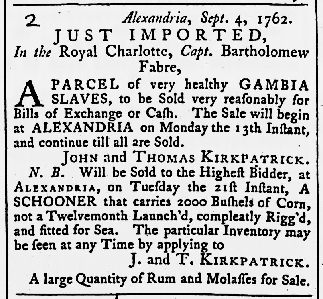
slaves were imported directly from Gambia and sold at Alexandria in 1762
Source: Maryland State Archives, Maryland Gazette (September 16, 1762)
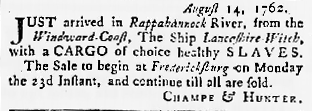
slaves were imported directly from the west coast of Africa and sold at Fredericksburg in 1762
Source: Maryland State Archives, Maryland Gazette (September 9, 1762)
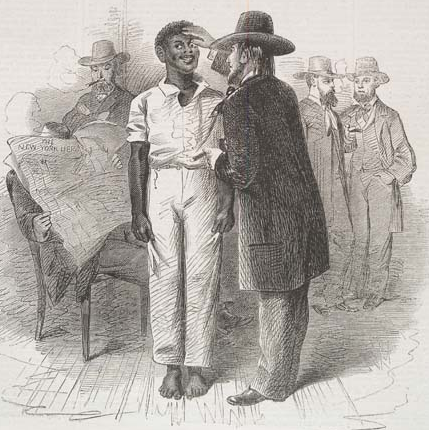
sale of slaves, to be shipped south for agricultural labor, was a major industry in Alexandria and Richmond
Source: New York Public Library, Dealers Inspecting a Negro at a Slave Auction in Virginia (Illustrated London News, February 16, 1861)
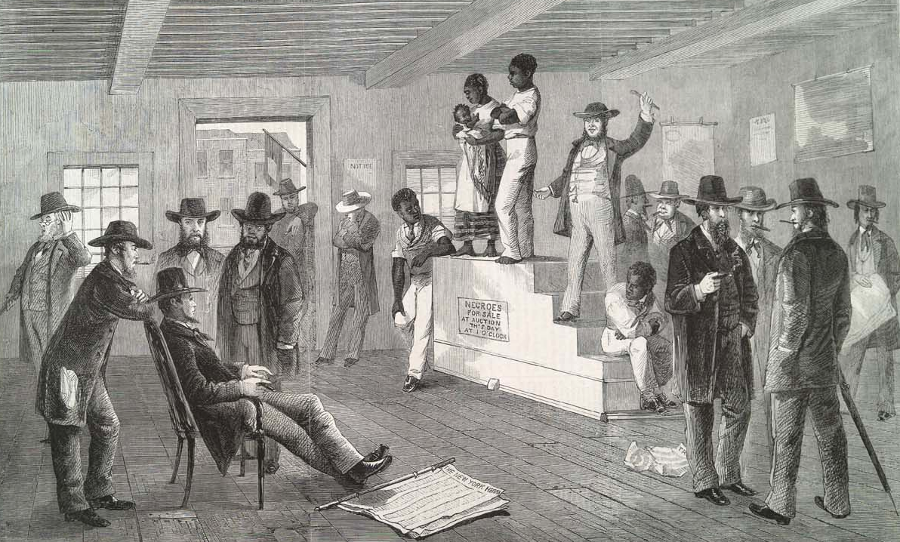
Virginia's most valuable export in the years prior to the Civil War may have been slaves, rather than tobacco
Source: Illustrated London News, A Slave Auction in Virginia (February 16, 1861)
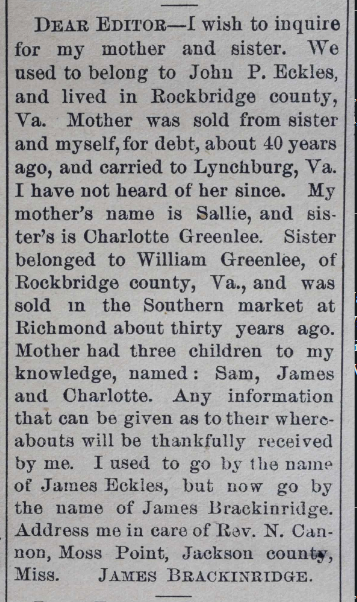
former slaves sought to reunite with their families after the Civil War through notices published in the Southwestern Christian Advocate
Source: The Historic New Orleans Collection, Lost Friends
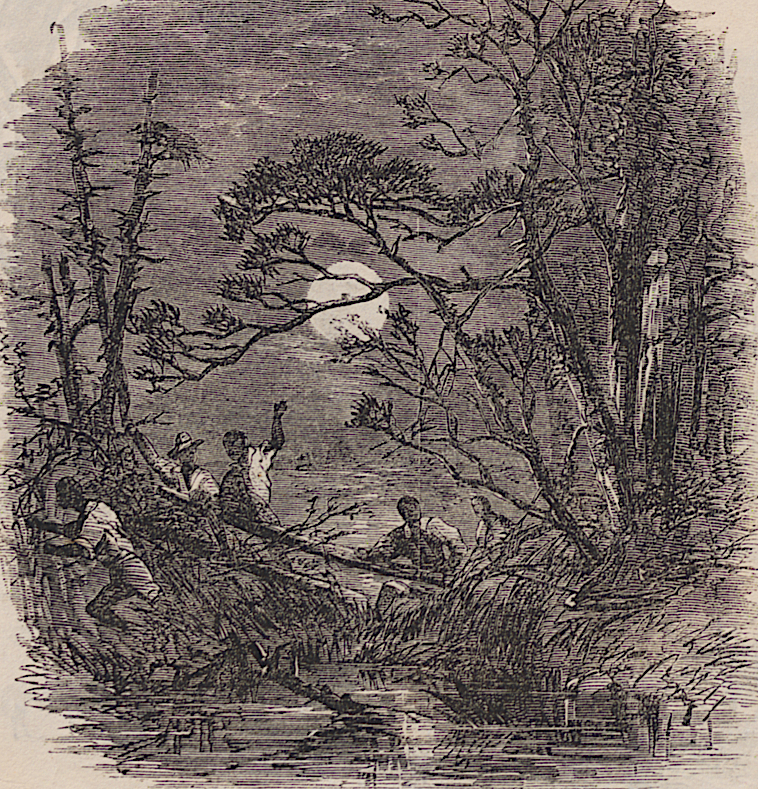
enslaved people flocked to Fort Monroe in 1861, taking control of their destiny to escape slavery
Source: Smithsonian Institution, Stampede Among the Negroes in Virginia (Frank Leslie's Illustrated Newspaper, 1861)
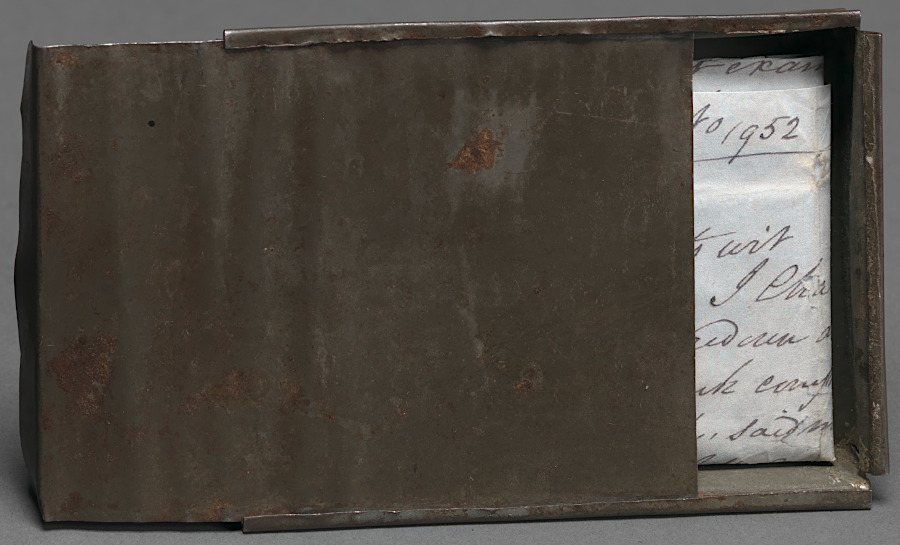
free blacks carried official papers when away from home, to prove their status
Source: Smithsonian Institution, Tin box handmade and carried by Joseph Trammell to hold freedom papers (1852)
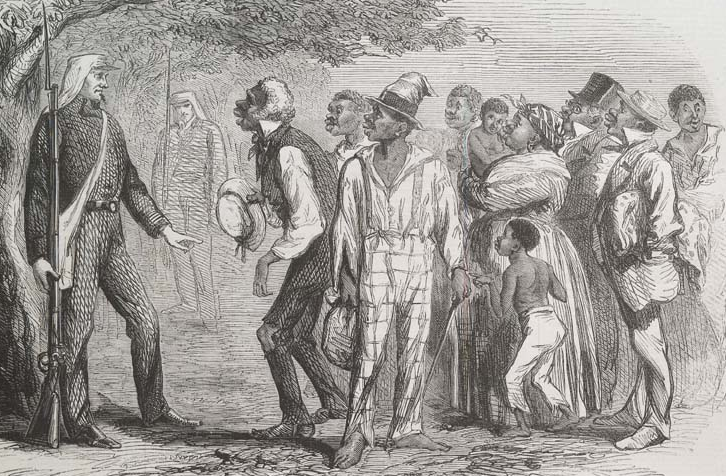
the English caricature of escaping slaves over-emphasized the shapes of lips, but captured the drive to seek protection from Federal forces
Source: Illustrated London News, The Civil War in America: "Contraband of War" (July 27, 1861)
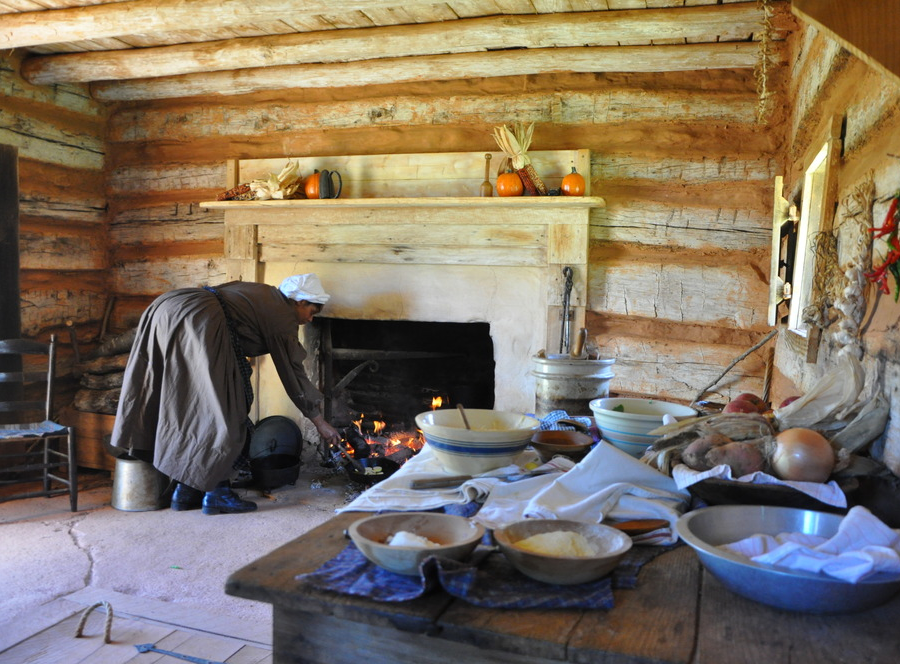
the National Park Service recreates life of the enslaved at the Booker T. Washington National Memorial
Source: National Park Service, Volunteer Tressa Moore demonstrates open hearth cooking
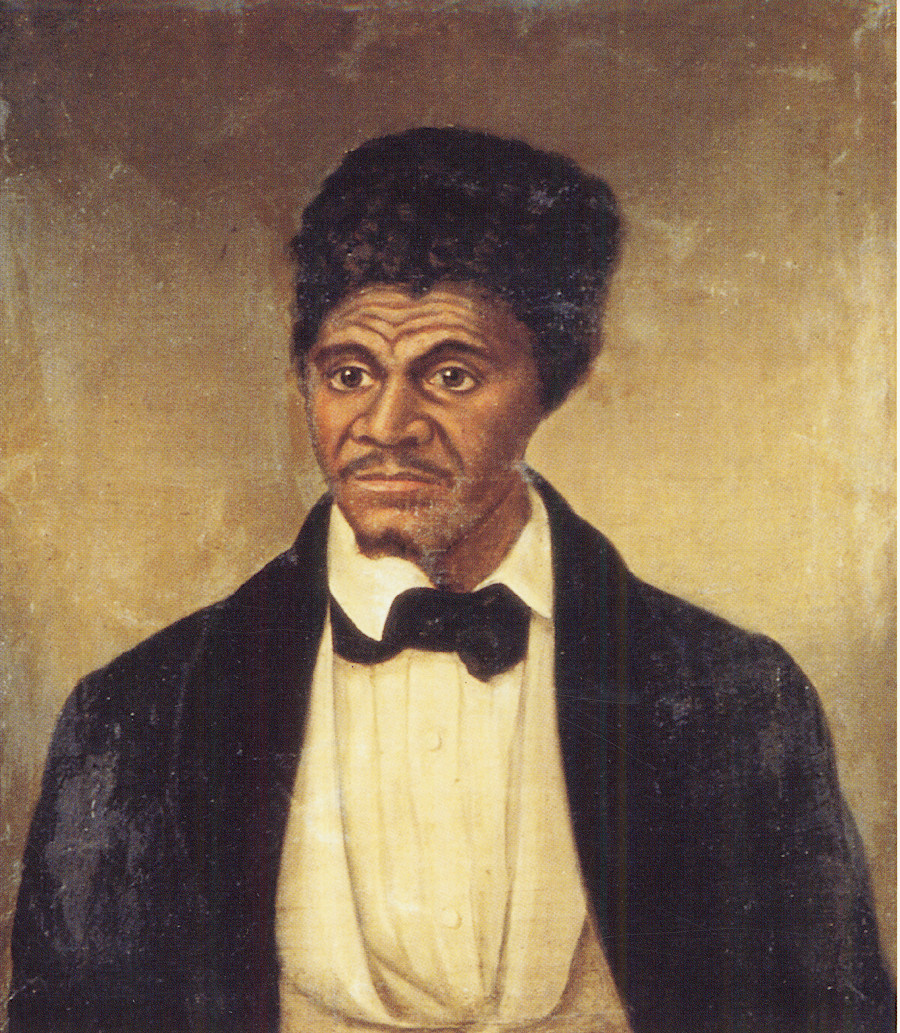
Dred Scott was born into slavery in Southampton County
Source: Slavery Images: A Visual Record of the African Slave Trade and Slave Life in the Early African Diaspora, Dred Scott, ca. 1857
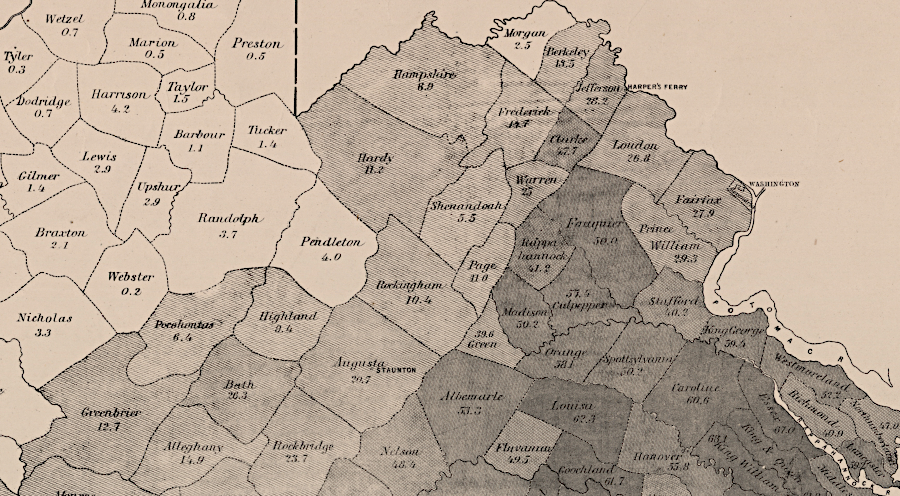
the western counties of Virginia had a much lower percentage of enslaved people in the 1860 Census
Source: Library of Congress, Map of Virginia Showing the Distribution of its Slave Population from the Census of 1860 (by Henry S. Graham, 1861)
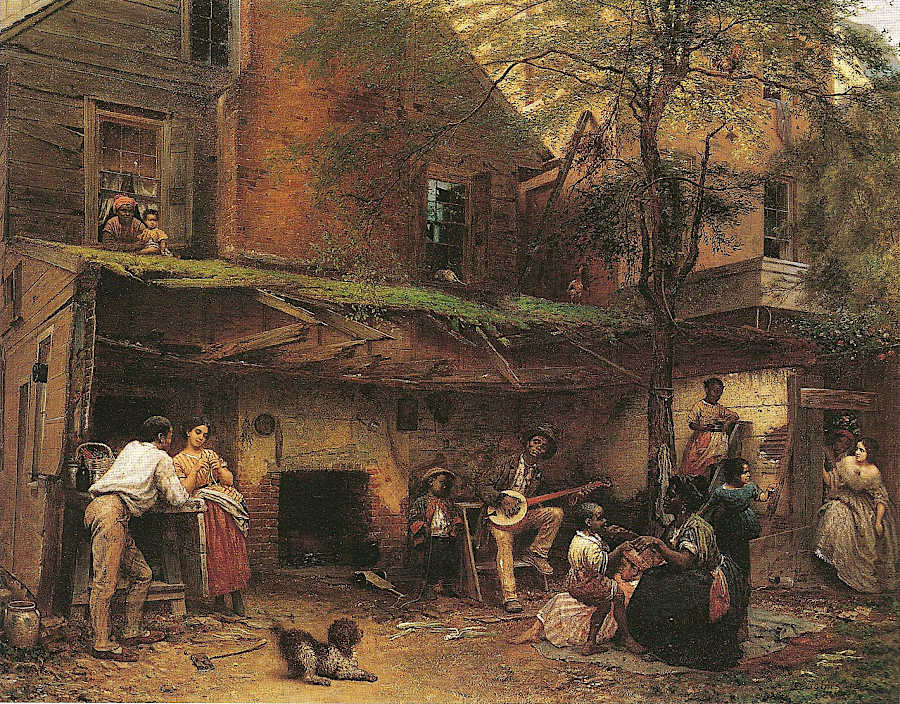
in urban areas, free and enslaved blacks could socialize together in back yards
Source: New York Historical Society, Negro Life at the South (by Eastman Johnson, 1859)
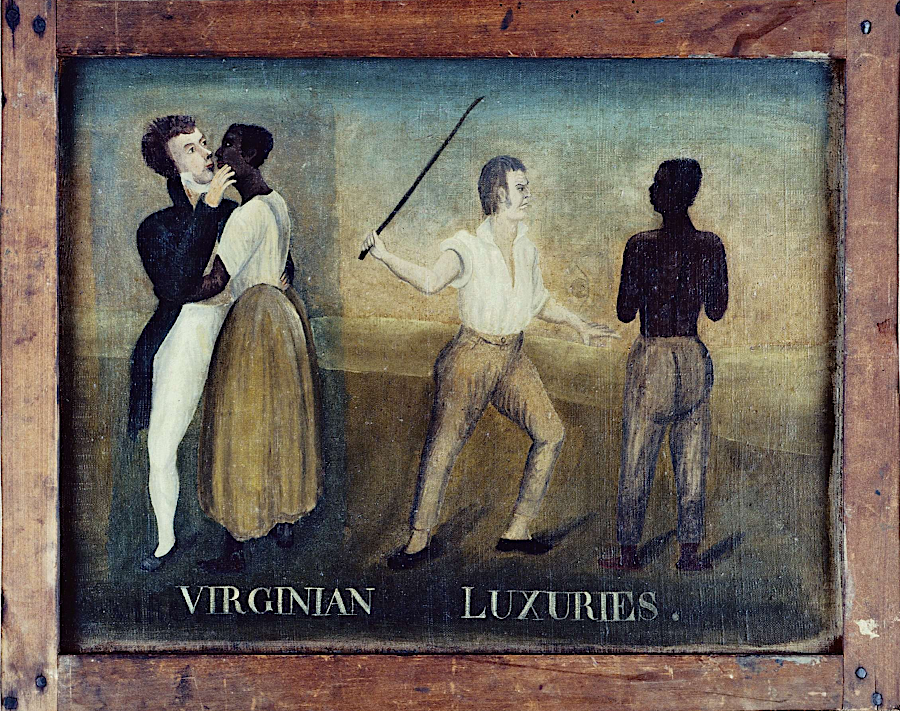
whites in Virginia had the power to beat and to kiss enslaved people without their consent - and take far more liberties
Source: Colonial Williamsburg Foundation, Virginian Luxuries